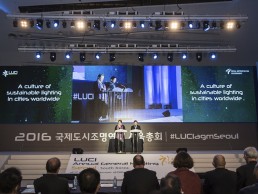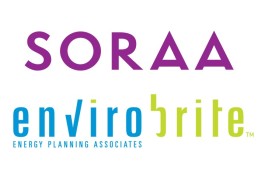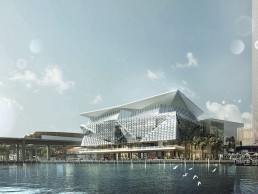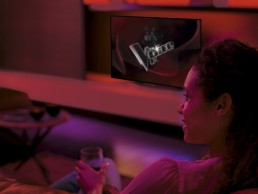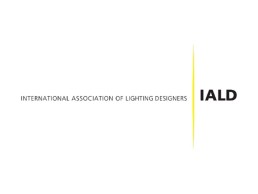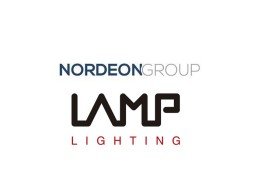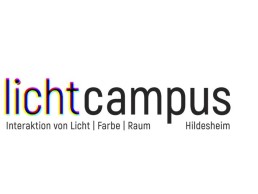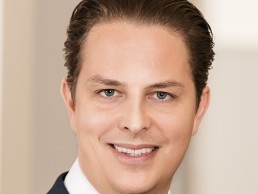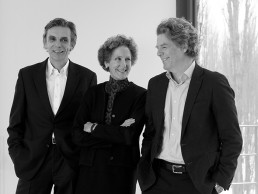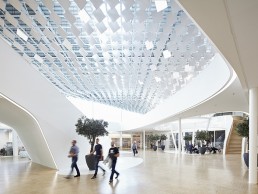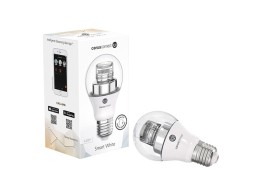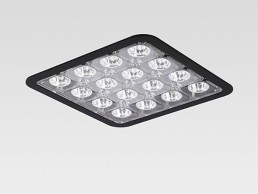Seoul Declaration adopted at LUCI AGM
(South Korea) - Over 50 cities gathered in Seoul to reaffirm principles of sustainable urban lighting for building comfortable, smart and energy efficient cities of the future.
City representatives and lighting professionals from LUCI, the international network of cities on urban lighting, came together on 4 November 2016 at the LUCI Annual General Meeting in Seoul, South Korea to adopt the Seoul Declaration of LUCI, which asserts that light makes a critical difference to our quality of life and calls for quality urban lighting to build better cities.
The Declaration was adopted in a ceremony chaired by the President of LUCI, Mary-Ann Schreurs, the Vice-Mayor of Innovation and Design, Culture and Sustainability of the City of Eindhoven, and the Mayor of Seoul, Wonsoon Park. It reaffirms the principles of sustainable urban lighting in line with the LUCI Charter on Urban Lighting adopted in 2010.
Key points of the declaration call for:
Quality urban lighting to build better cities: promoting common actions for a liveable city with citizen-focused lighting, human-centred design and a governance framework to develop inclusive, balanced and effective strategies for urban lighting.
A culture of sustainable lighting in cities worldwide: promoting a culture of sustainable lighting in cities worldwide, increasing energy efficiency of public lighting and developing sustainable ecosystems of light.
Innovation in lighting as a driver for quality of life: new lighting technologies, which have become a powerful engine and tool to enhance the quality of people’s lives, will help to make cities safer, more interactive and adaptable to citizen’s needs as a key component of the Smart Society.
Based on the key values of the LUCI Strategic Plan (2017-2027) agreed at the AGM in Seoul, the Declaration marks a significant new step in the development of the LUCI network and includes the establishment of the first LUCI Regional Office, one for Asia, in the city of Seoul. This Regional Office for Asia will support a more balanced regional development of LUCI and reflect the lighting culture and identity of Asian cities in the global conversation on urban lighting.
“With the Seoul Declaration and the LUCI Strategic Plan [2017-2027], LUCI takes a bold new step into the future, a future where light helps create the flourishing, innovative public spaces that our citizens need,” said Schreurs.
The City of Eindhoven, Netherlands represented by Schreurs was elected the new President of the LUCI network on 3 November 2016, the City of Seoul was elected as 1st Vice-President of the network and the City of Lyon was elected as 2nd Vice President.
“The Seoul Declaration of LUCI is in line with the City of Seoul’s commitment to building a sustainable, smart and people-oriented city with urban lighting. As Seoul takes its position as the LUCI Vice President, we are pleased to take the lead in promoting sustainable urban lighting particularly in Asia with the LUCI Regional Office for Asia,” added Park.
This Seoul Declaration was adopted within the framework of the LUCI Annual General Meeting, the international forum for cities on urban lighting which took place from 2 to 6 November 2016 in Seoul. Over 700 city representatives and urban lighting professionals participated in the event.
Envirobrite announces partnership with Soraa
(USA) - Envirobrite master distributorship expands Soraa’s reach.
Envirobrite has announced its partnership with Soraa as a master distributor of Soraa products.
The partnership is sure to benefit both companies while making it easier and faster for customers to purchase Soraa’s LED lamps.
Envirobrite has more than 23 years of experience manufacturing lighting fixtures and retrofit solutions, but has recently expanded its capabilities into distribution. The Soraa partnership is a key part of the channel growth strategy.
“We couldn’t be more excited about this opportunity with Soraa,’’ said Jason Plourde, President of Envirobrite. ‘‘The partnership allows us to leverage our reputation and longstanding customer relationships with an elite lamp manufacturer in the distribution channel across the US and beyond.”
George Stringer, Soraa’s Senior Vice President of Global Sales & Channel Marketing added: “Our new partnership with Envirobrite will ensure that more customers in more places across the country will be able to see in Soraa's LED light.”
www.envirobrite.net
www.soraa.com
2017 sparc-FMA International Lighting & Facilities Event details announced
(Australia) - International Lighting & Facilities Event to take place 30 May – 1 June 2017 at ICC in Sydney.
The peak industry bodies for lighting and facility management in Australia have announced a major exhibition and conference during the 2017 Vivid Sydney festival.
Plans are now underway for the sparc-FMA International Lighting & Facilities Event (sparc-FMA), which will be held at the new International Convention Centre at Darling Harbour over three days (30 May-1 June) in the very heart of Vivid Sydney.
sparc-FMA is a joint initiative of Lighting Council Australia and the Facility Management Association of Australia. The event will feature an exhibition showcasing the latest in lighting and facility management innovation from Australia and globally. Australian and international suppliers and service providers will be showing the latest developments. sparc-FMA will also feature a conference involving world-renowned experts in the fields of lighting and facility management.
Lighting Council Australia’s CEO Bryan Douglas said: ‘‘Facility management and lighting are highly complementary industries and that the combined event represents an excellent opportunity for Australia’s lighting industry.’’
Nicholas Burt, CEO of the Facility Management Association of Australia, added: ‘‘sparc-FMA will be Australia’s largest and most significant event for the facility management and lighting industries. The event will benefit by being owned and managed by the two industries – an event operated by industry, for industry. Events such as this run by industry bodies contribute to sustaining industry development.’’
Exhibitors, sponsors, partners and visitors are invited to register their interest at:
Philips Lighting creates immersive experience for ITV viewers of The Voice UK
(UK) - Philips Hue to connect with The Voice UK app to provide viewers with immersive lighting experience during app play-along.
Philips Lighting and The Voice UK have entered into a partnership to bring the studio atmosphere of the series into UK homes. By connecting Philips Hue lights to The Voice UK app, viewers will be able to experience the music talent show like never before.
The Voice UK starts this weekend on ITV with a new coaching panel and free app. During the Blind Auditions, users can sync The Voice UK app to their Philips Hue lighting system to have a unique lighting experience during the app play-along. When an act comes on stage users will be able to emulate the coaching experience as when they press their red button in app, their living room will also turn red. During the battles and the live shows The Voice UK app will allow viewers to sync their Philips Hue lighting system to their living room and reflect the light effects in the studio creating an immersive music experience.
David Nicholl, CEO Philips Lighting UK&I commented: “Philips Hue is reinventing how we interact with light in our homes. Through this partnership we are giving viewers a whole new way to enjoy The Voice UK, creating a unique immersive experience with light.”
Philips Hue also features backstage in The Voice Box. After each episode viewers will have access to exclusive content with the acts in a dedicated section of The Voice UK app. This is the place to see the acts experiencing the product, having fun and showing off their personalities.
Philips Lighting will be amplifying the partnership via a social media and digital advertising campaign that begins this month.
www.lighting.philips.com
www.meethue.com
IALD announces 2017 election results
(USA) - Seven lighting designers bring expertise to Board of Directors and Membership Committee.
The IALD has announced the results of the 2017 Elections for the IALD Board of Directors and IALD Membership Committee. These are as follows:
2017 IALD BOARD OF DIRECTORS:
PRESIDENT-ELECT: DAVID GHATAN, IALD – Alexandra, VA USA 2017
TREASURER: RONALD D. KURTZ, JR., IALD – St. Louis, MO USA 2017
DIRECTORS-AT-LARGE: DENISE FONG, IALD – Seattle, WA USA
MONICA LUZ LOBO, IALD – Rio De Janeiro, Brazil
KEVAN SHAW, IALD – Edinburgh, Scotland UK 2017
IALD MEMBERSHIP COMMITTEE:
COMMITTEE MEMBERS: COLIN BALL, IALD – London, England UK
JERED WIDMER, IALD – Philadelphia, PA USA
DAVID GHATAN, IALD
IALD Board of Directors, President-Elect
CM Kling + Associates
Alexandria, VA USA
David Ghatan, IALD, is president of CM Kling + Associates and has worked in architectural lighting for the past eighteen years. Ghatan currently serves as Treasurer on the IALD Board of Directors and previously held a Director-at-Large position. He has also served as coordinator of the IALD Washington DC chapter and the Certified Lighting Designer (CLD) task force, as well as worked closely with the IALD Public Policy initiatives in meetings with legislators and industry allies. He also serves as a member of the IESNA Hospitality Committee. His theatrical work in scenery and lighting design has been nominated for several regional awards, and he is currently a company member with Rorschach Theatre. Ghatan is a graduate of The George Washington University with a degree in Design focused on the integration and cross-disciplinary aspects of design. Throughout his life, he has lived in Europe and the Middle East in addition to the United States.
RONALD D. KURTZ, IALD
IALD Board of Directors, Treasurer
Randy Burkett Lighting Design
St. Louis, MO USA
Ron Kurtz, IALD, has been with Randy Burkett Lighting Design since 1990. Kurtz’s responsibilities as a lighting designer and project manager include the development of conceptual design, which involves the determination of both aesthetic and technical requirements, the preparation of contract documents and specifications, as well as construction phase coordination and field observation. His lighting design experience includes three years with Grenald Associates, Ltd. in Philadelphia, PA USA and Washington, DC USA. Kurtz has been responsible for the design of large public spaces and lobbies, hospitality and conference facilities, office environments, exterior landscape and building floodlighting, and themed entertainment parks and exhibits. He is an active member of the IALD and currently serves on the Board of Directors as a Director-at-Large, and on the Finance Committee. He has also participated in the IALD’s Energy and Sustainability Committee and the Nominations & Election Committee on three separate occasions. He is also involved in the IESNA on both a local and national level, currently serving on the Energy Management Committee. Additionally, he was also a member of, and an IALD representative to, ASHRAE’s 90.1 Energy Standards Committee from 2001 to 2011 and was a participant in the development of ASHRAE’s Advanced Energy Design Guidelines for Small Office Buildings. He has been a speaker on a number of lighting topics at professional and educational conferences.
DENISE FONG, IALD, CLD
IALD Board of Directors, Director-at-Large
Stantec
Seattle, WA USA
Denise Fong, IALD, CLD, LEED AP, MIES, is a principal and lighting design practice leader for Stantec. She has more than 30 years of experience in specialised lighting design for both public and private clients. Recognised by her professional peers with numerous design achievement awards, she is highly skilled in assisting in developing high quality, energy efficient lighting systems for a wide variety of project types. She is a national leader in sustainable urban design initiatives. For many years, Fong has participated in energy code development on the local and state level as well as with the IALD Energy & Sustainability committee. From early in her career she has been interested in how our design impacts the world in which we live and was one of the first lighting designers to be LEED accredited. She has traveled extensively to study sustainability practices around the world, and she speaks and writes frequently on these subjects.
MONICA LUZ LOBO, IALD
IALD Board of Directors, Director-at-Large
LD Studio
Rio de Janeiro, Brazil
Monica Luz Lobo, IALD, is creative director of LD Studio. She is an architecture and urban planner graduate from Santa Úrsula University, in Rio de Janeiro, Brazil with over 28 years of experience in the lighting industry. She established LD Studio in 1997. Her work has been featured in many local and international publications and she has won a number of awards at home and abroad. Lobo is committed to the development and dissemination of the profession of architectural lighting design, and she is one of the prime movers behind the 2016 edition of the Ibero-American Lighting Design Gathering (EILD). She also frequently attends and lectures at major Brazilian and international conferences, fairs and workshops.
KEVAN SHAW, IALD
IALD Board of Directors, Director-at-Large
KSLD
Edinburgh, Scotland UK
Born in Edinburgh in 1954, Shaw’s first degree in Economic and Technological History and Social Psychology seems to have little to do with his career as a lighting designer. However, he gained Chartered Engineer status through the ILP in 2012, the first non-engineering degree holder to achieve this. In his 40-year career in lighting and 25 years of running his own practice, he has designed numerous innovative projects across a broad range of building types. Shaw has been a passionate and active advocate for the profession of Independent Lighting Design throughout his career. He has served on the IALD Board over the last two years, the Membership Committee and at board level in other international lighting associations. Shaw continues to undertake considerable voluntary work dealing with lighting legislation in Europe, and was chairman of the committee revising the Society of Light and Lighting’s LG8 on Museum and Gallery Lighting. He is also active in lighting design education, currently lecturing at Edinburgh Napier University on the Lighting Master’s program, is a visiting lecturer on the KTH Lighting masters in Stockholm and provides a distance learning course for the Technical University of Iceland. His broad ranging lighting design projects have been recognised in many lighting awards.
COLIN BALL, IALD
IALD Membership Committee Member
BDP
London, England UK
Colin Ball, IALD, leads the London office of BDP’s award winning Lighting Team. His current work involves developing innovative techniques for lighting within World Heritage venues plus Carbon Exemplary projects for cutting edge science institutes. These new lighting techniques involve influencing the daylighting condition of the architecture and detailed studies of the occupants to save large amounts of energy. From a background education in architecture, Ball has worked as a Lighting Designer for 20 years with nine years’ experience at Speirs + Major and six years at Isometrix Lighting + Design prior to joining BDP in 2011. Ball has developed a series of lectures that look at how Light in Faith is represented from historical, religious and psychological perspectives in architecture and contemporary art, which he has delivered across the UK, Europe, North and South America. An organiser of a London Light & Film Festival, Ball also delivers talks on parallels of Lighting between Film, Theatre & Architecture. He has authored a number of articles for national and international professional lighting magazines regarding elements of these lectures.
JERED WIDMER, IALD
IALD Membership Committee Member
The Lighting Practice
Philadelphia, PA USA
Jered Widmer, IALD, is a principal at The Lighting Practice (TLP). He joined TLP upon graduating from The Pennsylvania State University’s Architectural Engineering program in 2000. Widmer has sixteen years of experience in the lighting profession designing lighting solutions for academic, corporate, retail, historic, hospitality, healthcare environments, and places of worship. The diverse work in these sectors allows him to merge creative principles and techniques to enhance the user environment for a more successful project. He educates clients and team members through a collaborative design process, facilitating a better understanding of the impact of lighting. Widmer has served thirteen years as an adjunct professor at Drexel University, educating architectural students on lighting. He is extremely active in the lighting design community as a Professional member of the IALD and IES. With the IES, he has held the position as the Philadelphia-section President and continues to remain active as a board member and volunteer. On a national level, he is serving his sixth year on the IES Progress Report Committee – currently holding the role of Vice Chair. With the IALD, Widmer just completed a two year position with the Conference Advisory Committee (CAC). He worked with colleagues both on the IALD and IES to plan the speakers and seminars for LIGHTFAIR International 2015 and 2016.
Lamp Lighting joins Nordeon Group
(Netherlands) - Lamp Lighting brings industrial centres of Spain, Mexico, Colombia and Chile to Nordeon Group's manufacturing operation.
Lamp Lighting, manufacturer and designer of technical and architectural lights, has signed an agreement for the company’s integration into The Nordeon Group.
The Nordeon Group, with its head offices in Eindhoven, is one of the fifteen largest lighting system manufacturers in Europe.
With the incorporation of Lamp Lighting there are now seven front line area leaders in The Nordeon Group. The present organisation includes Hess (Germany), Wila (Germany), Schmitz (Germany), Vulkan (Germany), Nordeon (France) and Griven (Italy). VIAPAQ, a technology and research company specialised in R&D and with factories in France and Finland, is another member of the group.
According to Ignasi Cusidó, Lamp Lighting’s general manager, the operation culminates “a strategy of growth and search for competitiveness,” in order to “join a broader strategic group to consolidate Lamp’s future in the lighting industry, a sector in constant transformation”.
With the agreement, the company from Terrassa created in 1972 “has found a perfect partner for its DNA, the strategic plan, the business spirit and above all the technological base and the global infrastructure that will help Lamp to continue to grow in the digital era”, Cusidó explained.
The agreement therefore includes Lamp maintaining its brand and catalogue of products, along with its manufacturing continuing in Terrassa with the current payroll and work team, which will continue to be managed by Cusidó.
For Pierre van Lamsweerde, CEO of The Nordeon Group, the incorporation of Lamp Lighting must serve to “improve the group’s capacity to give service to a very demanding portfolio of customers in search of highly competitive high-quality products”.
Furthermore, Lamp Lighting’s leadership in Spain and South America “will be the cornerstone of the group on which to extend its market to these new geographical areas. The new stage will also help Lamp Lighting to benefit from the high technology and the extensive industrial base of the group and to commercialise the products of its catalogue through the group’s commercial infrastructure and global support”, concluded van Lamsweerde.
Founded in 2012, The Nordeon Group is one of the main technical and architectural lighting companies in Europe for both indoor and outdoor. With production strategy, technical and innovative development and support facilities near its most important markets, the companies of the group share the common denominator of being local, reliable and competitive partners with the capacity to work on a global scale.
Integration in the new group involves the transaction of a majority of the shareholding that the Cusidó family had held up to now and of which it will maintain a minority share. In the same operation, the Cusidó family members become shareholders of The Nordeon Group.
In 2016 the group expects to have a turnover of around 140 million euros. The company is present in around fifteen countries, allowing it to weave a commercial network that supplies practically every country on Earth.
The group has industrial plants in Germany, France, United Kingdom, Italy, Finland and the United States. With Lamp Lighting coming into its structure, it now adds the industrial centres of the Spanish state, Mexico, Colombia and Chile.
Over all of its companies, The Nordeon Group employs more than 1,000 workers.
By bringing in manufacturers specialised in different sectors of lighting and through the growth of the group’s companies, its aim is to exceed 200 million in turnover by 2019. Lamp Lighting, which expects to close this 2016 on 23 million euros, hopes that this strategic leap will allow it to exceed 35 million euros in turnover by 2019.
Lamp Lighting now exports in the order of 70% of its production, expanding from just 25% in 2008.
www.lamp.es
www.nordeon-group.com
Lichtcampus 2017 to visit HAWK Hildesheim
(Germany) - Weinberg Campus will radiate with light over four day period from 6-10 February 2017.
Taking place from 6-10 February 2017, the second Lichtcampus will be held at the HAWK Hildesheim, Germany.
The HAWK (Hochschule für angewandte Wissenschaft und Kunst) is inviting all lighting enthusiasts to attend. Over a four day period, students, professors and industry professionals will take part in an interdisciplinary forum of workshops, lectures and exhibitions under the theme ‘Light, Colour and Space’. An event highlight includes an open house on Friday 10 February, when the Weinberg Campus will be glowing inside and out with a lighting spectacle of various creations.
Lichtcampus was brought to life in February 2015 by Prof. Dr. Roland Greule at the HAW Hamburg, when over 100 students met for five days to explore physical light as a material and a tool in an academic forum aimed at promoting collaboration among various fields of study. Professionals of multiple disciplines also participated, providing a successful platform of exchange between students and the industry.
Now the HAWK Design Faculty has accepted the challenge to fill those shoes. A creative team under the direction of Prof. Bettina Pelz, Prof. Dr.-Ing. Paul Schmits-Reinecke, Prof. Stefan Wölwer, and Prof. Markus Schlegel is bringing Lichtcampus 2017 to Hildesheim. The event welcomes anyone who works with light, colour or space, whether it is in architecture or on stage, biological or physical, art or design, in media or in technology or in connection with energy or psychology to join the activities.
A team of students from various majors at the HAWK Faculty of Design has taken on the task of optimising the experience from Hamburg and creating an exciting program that provides participants with a unique experience. This will be a chance for universities to present themselves, for students to learn from the industry, to try new things in workshops and at the end to discuss and celebrate with one another the shared knowledge and experiences. The evening program will provide opportunities to discover how Hildesheim works with light.
At the end of the week, there will be an exhibit to present findings to the public. Universities are invited to produce a contribution under the theme ‘Light, Colour and Space’. More than 25 universities in Germany and Switzerland have been invited and many participants are expected.
On Friday, February 10, starting at 18:00, the open house, along with a presentation of the results from the week, will take place. The event is free of charge and participation in Lichtcampus 2017 is also free.
www.hawk-hhg.de
www.lichtcampus.net
Seoul Semiconductor appoints Andreas Weisl as new CEO
(Germany) - Based in Munich, Weisl takes on CEO position following role as General Manager for Central and Northern Europe since 2010, and Vice President Europe since 2014.
Andreas Weisl, former Vice President Europe of Korean LED manufacturer Seoul Semiconductor (SSC), has taken on the position of CEO at Seoul Semiconductor Europe based in Munich, Germany.
The European headquarters has been successful in establishing themselves since 2010. The global success story of SSC, which is marked by rapid growth, has been successfully implemented in Europe for many years now. SSC is one of the leading companies in global markets and throughout the European LED market.
In his role as General Manager for Central and Northern Europe since 2010, and as Vice President Europe since 2014, Weisl is part of the SSC executive and is responsible for business developments in Europe. Weisl has contributed significantly to the company’s success and looks back on more than eleven years of experience in the area of LEDs before coming to SSC in 2010. Previously he served as a manager, among other roles, at Osram Opto Semiconductors.
Sauerbruch Hutton
At the latest iGuzzini LightOn lecture Louisa Hutton described Sauerbruch Hutton’s functional approach to architecture and its teamwork philosophy regarding the firm as a family. Henrietta Lynch profiles the international architectural practice and its use of daylight and colour in its projects.
Sauerbruch Hutton’s office, located in central Berlin not far away from Hauptbahnhof, originally developed as a German/British partnership between Matthias Sauerbruch and Louisa Hutton in London in 1989. The firm now includes a third Partner, the Argentinian Juan Lucas Young, four associate directors and a mixed discipline workforce of about 100 staff in total. This is an international office with over 25 different nationalities employed and English spoken as one of the main languages. They admit to enjoying the dialogue that this diversity brings to their design culture. Their projects, like the office, are also diverse and located across Europe and range from bank headquarters and government buildings to arts, religious and cultural developments and private residencies.
Sauerbruch Hutton is well known for its skilled use of light and colour as an integral part of the façade and overall design of many of its buildings. Landmark projects such as the KfW (Kreditanstalt für Wiederaufbau) building in Frankfurt am Main, is distinguished with its use of different colour schemes for each aspect of the building exterior.
Likewise the GSW (Gemeinnützige Siedlungs und Wohnungsbau Gesellschaft mbH) headquarters building in Berlin, which was completed in 1999, made an innovative statement and challenged the planning status quo in the city during the immediate post wall or post ‘Mauer’ redevelopment years, with its modernist inspired form, progressive environmental design criteria and striking coloured west façade.
David Wegener, one of the associates at Sauerbruch Hutton, explained that working with light forms a main part of their design palette, helping to produce an architecture that is both functional and beautiful. This is apparent in the sublime roof-lit spaces on the top floor of their own offices. The practice works with light as a design medium to help create sophisticated façade interfaces that often employ several layers of colour, shading, glass design and patterns to manipulate the building’s internal and external environments. Desired design results are achieved through the production of studies that generally include an examination of the building’s direct physical context and surroundings. These studies can, for example, review local weather patterns, the existing cityscape, local planting and vegetation, historic references and works of art to inform final design decisions. Taking all these elements into consideration can create a degree of complexity that may require designs to be tailored towards more simple and robust final solutions which can accommodate all these varied inputs.
Understanding the local context and weather conditions for a building design helps to direct design choices that affect the way a building operates, but also the way in which it is perceived. Working with colour creates a special design element that will slightly change in response to different light qualities and conditions throughout the seasons.
In the case of the KfW building in Frankfurt, the blue part of the façade is inspired by the neighbouring 1960’s office building. The red colour of the façade draws references from stone and brick used within the traditional built infrastructure in the city of Frankfurt, and the green colour forms a discrete backdrop to the adjacent Palmgarten Park.
Wegener describes the use of colour in the façade design as being like dressing a house. “The colour becomes a material acting simultaneously as image and sculpture, ornament and text, allowing the complex technical reality of a building to disappear behind a powerful aesthetic experience.”
Sauerbruch Hutton do not however consider the use of façade colour as a company ID. Instead, they see it as a tool that can be employed as one part of the design concept bringing additional meaning to the architecture. This meaning may be extended via the use of subtle and intricate patterning used as part of the glazing design for specific projects. This can function to control daylight and solar transmission levels and provide contextual reference, according to the individual choice of patterns used. Controlled glazing design can also provide a considered passive or active link to the ever changing external environment. It forms part of a building’s overall lighting strategy, working with and filtering changing light levels throughout the day and year.
Two projects that Wegener thinks have been particularly successful but challenging with their natural lighting designs are the Brandhorst Museum in Munich and the Immanuel Church in Cologne. For the Brandhorst Museum Sauerbruch Hutton wanted to maximise the use of natural daylight inside while meeting the highest demands of conservation to protect the objects on display. Specific technologies such as prismatic mirrors and soffit membranes were developed to re-direct and filter the light in the galleries.
The church is lit by two main sources of indirect daylight from opposite directions – a skylight above the altar, and a large translucent window at the rear of the gallery – both subtly illuminating the central nave in a subtle if not spiritual manner.
Wegener comments: “I see designing with light as working with a number of different components of both natural and artificial light with the aim of achieving equilibrium between functional light level requirements, aesthetics, a building’s energy demands and budgetary constraints.”
Despite all these factors being juggled according to the nature of each project, Wegener thinks that budget is particularly important and should be understood at the outset of the design process, since it will dictate the overall choice of building systems and the materials that can viably be used.
Understanding and working through all the different component parts that make up an architectural design is seen by Sauerbruch Hutton as being a process that should ideally be undertaken methodically and with care making sure all building design elements are adequately considered and addressed, and allowing for appropriate quality control.
Sauerbruch Hutton work with a number of different in-house skills, including model makers, façade specialists, product designers and cost surveyors which they believe enables them to deliver more fluid and developed designs. They also work with many external consultants including lighting designers and engineers. The choice of lighting designers that they like to work with depends upon the nature of a project, since Wegener thinks that different consultant offices are able to offer different types and levels of expertise.
More often than not, Sauerbruch Hutton chose to work with lighting design partners that they know and have trusted in the past. Wegener names Licht Kunst Licht (such as in the Hager Forum in Obernai) and Arup Lighting (such as in the Brandhorst Museum) as example practices.
“Working with many varied consultants can help to produce interesting and high quality designs,” he states, “but can sometimes lead to problems or gaps in delivery at the interface between the remit of different design disciplines. This can be especially problematic where professional or contractual boundaries are not fully understood. And it tends to increase with more complex projects or fractured design teams.”
During the design production and once a building is complete, Sauerbruch Hutton like to undertake occupant consultation and feedback exercises which can help to inform the design processes and overall designs as they progress. These can eventually enable a building to be better managed but also allow for architectural projects to be better conceived. As far as is possible, Sauerbruch Hutton like to allow for these processes to be included within the initial design contracts so as to ensure that there is enough cost to cover them during all phases of a project’s development, right up until and beyond completion. Experience tells that they can otherwise often be forgotten or neglected.
As Wegener relays: “Light is an integral component of a building’s design and can be translated into even the smallest details such as light fittings, fixtures and luminaires.”
Sauerbruch Hutton often enjoy working with industrial, lighting and product designers to help create these types of details to fit their own brand of architecture. Wegener explains that they see opportunities with the commercial production of such items and would hope for some of these specific lighting products to be brought to market, with the aim of them being separately retailed for other designers, architects and individuals to enjoy.
Importantly, Sauerbruch Hutton understand light as forming part of a palette that can be manipulated to help achieve low energy and environmentally sensitive designs. Over the years, the office has worked to try and push the boundaries of their architecture to make their buildings as ‘green’ as possible. While they admit that this has not always been an easy task, they have often received positive industry and client acclaim for doing so, and would like to continue to develop their expertise in this area in the future.
As a European and International office, Sauerbruch Hutton hope that they will continue to work across different national boundaries and with the high skill levels and cosmopolitan nature of design teams and clients that they have worked with to date. It is their belief that such collaborative working has the potential to achieve exciting results and very special projects.
Pic: Claire Laude
HTC48, Netherlands
LAVA (Laboratory for Visionary Architecture), along with lighting designers Beersnielsen, has created a unique gathering space in the atrium of the Philips Lighting headquarters in Eindhoven. mondo*arc editor Paul James paid a visit to bask in the light.
Standing outside the unassuming, modernist building named HTC48 - the Philips Lighting headquarters at the High Tech Campus in Eindhoven - you would be hard pushed to imagine what lies inside. But when you walk in, the sight before you takes your breath away. The spacious atrium contains a magnificent lighting sculpture that appears to be an organic mass, flickering and communicating in an apparently random manner.
In close cooperation with Philips Lighting, LAVA (along with partners INBO and JHK) and Beersnielsen were responsible for creating and lighting the spatial sculpture called the Light Tree, a parametrically designed sculpture containing 1,500 ‘leaves’, hanging panels that cover the whole atrium. The aim was to design a space that both embraces the innovation and core values of the brand. The design features an inspiring and healthy work environment for the Philips employees.
Asked why Philips Lighting decided to create the atrium space and sculpture, Guillaume Galloy, Design Consultancy Director of Philips Lighting, comments, “The lighting industry is going through a huge transformation due to the digital revolution. As a company, this requires us to completely change the way we work. But at the heart of it all remains human communication. This is what the atrium fosters - the fact that people from different departments will unexpectedly meet and talk to each other.”
It might be said that the Light Tree signifies the root and branch of the Philips Lighting organisation and its philosophy.
For this reason LAVA conceived a network of ‘attractors’ throughout the building, where people need to go for specific uses. These spaces were designed to encourage informal ‘accidental’ interactions, known to be a key enhancer of success in R&D businesses.
“We use light for information, emotion and activation,” states Nuno Galvao, senior architect at LAVA. “It’s a different approach than just looking at luminaires. It’s a search for the original meaning and natural understanding of light.”
The giant tree demonstrates the behaviour of light, both natural and artificial. During the day 500 Philips Ecophon Soundlight Comfort light emitting panels (an integral product that consists of comfortable LED lighting with sound absorption in an integrated light and acoustic ceiling system) provide changing light scenarios, supplemented with 50 Philips Selecon RAMA LED fixtures placed in the centre of the sculpture which create the ‘Golden Light’. The idea of sunlight, light sparkles on water, or the dramatic play of colour, light and shadow at dusk and dawn.
Juliette Nielsen of Beersnielsen explains, “We tried to capture the different moments of daylight into the building like the sunlight that falls through the trees, for example. We created reflective cones that sit behind the panels and scatter the light creating beautiful patterns of light and shadow.”
A reflective surface on the back of each panel creates a play of light and shadow. It also filters and reflects natural light from the atrium side windows and skylights.
Because of this giant tree the light in the atrium transforms automatically, totally random from alluring light to refreshing or even energising light. To enhance the quality of the Light Tree, LAVA developed a light control application that allows individual control over each of the 500 panels and LED fixtures. It uses low-level artificial intelligence to derive daily light scenarios in an organic and non-repetitive way. Scenarios respond to the seasons, times of the day and architectural layout of the atrium space. The combination of natural light, physical representation and intelligent light control creates an innovative space-light office ecosystem.
“The atrium, originally the central courtyard of the 1950s building, was designed as a place of welcome, way finding, branding and staff interaction, and therefore had to be strong spatially,” says LAVA director Alexander Rieck.
The atrium also brings people together by congregating core activities such as exhibitions, meeting rooms, coffee bar, public talks and staff meetings, and is also the entrance to the new Philips Lighting Application Centre.
Covering the whole atrium ceiling the sculpture demonstrates the behaviour of light, both natural and artificial: reflection, diffusion and emission.
“Light was obviously the main driver but LAVA’s design goes beyond just showcasing technical solutions – it explores a deeper understanding of the nature of light. Light is only visible to the human eye when it reflects on something, so the sculpture gives shape and visibility to light,” adds Rieck.
Rieck explains, “The sun gives our sense of time. Working in an office means people miss the subtle light changes during the day. So LAVA programmed the panels using low-level artificial intelligence to create daily light scenarios in an organic and non-repetitive way for the whole calendar year. The patterns are never the same. Scenarios respond to different seasons, times of the day and the architectural layout of the atrium space and are used to activate or relax the users throughout the day.
“It’s a bit like an ecosystem, with light effects turning golden, for example, as an energy boost in the morning.
“We know from Fraunhofer Institute research that generating different lighting effects is a cost effective way to bring variety and productivity to the lives of workers who quickly become oblivious to their surroundings, no matter how attractive.”
“The iconic design not only gives visitors an amazing experience and a transition from the entrance to offices and the Lighting Application Center, but also reflects this innovative and forward-thinking company,” he adds.
The offices were designed to foster creativity with a more flexible and efficient use of space. Spaces were designed to encourage informal ‘accidental’ interactions, known to be a key enhancer of success in R&D businesses.
Special environments were created for different work situations – from concentration to communication, activation to relaxation.
Other factors such as variable visual fields, perceived security, acoustics, smell, lighting, materials and textures contribute to an effective and harmonious work environment, which meets the highest standards of the innovative workspace layout WPI (work place innovation).
The design was developed using the latest workspace research and Philips experience with recent fit-out experiments plus an intensive cycle of interviews and design meetings involving the end users and building management.
www.l-a-v-a.net
www.beersnielsen.nl
www.lighting.philips.com
Casambi Carus Connect Smart White
The Carus Connect Smart White is a 8W E27 lamp with a long life up to 25,000 hours and a tunable white feature between 4,500K and 2,200K. The lamp supports all Casambi functionalities like grouping, controlling lighting directly from a photograph, scenes, animations, schedules with astronomical clock, smart switching from traditional wall switches and even remote access. It is also fully compatible with all other Casambi-ready devices
Reggiani CELLS
The CELLS luminaire has a new version for ceiling-mounted recessed installations at a depth of only 10cm. Available in two versions: with flush and drop diffuser, the LED sources are placed in recessed position to maximise visual comfort (UGR < 19 for version with narrow, medium, rectangular and asymmetric beam). With a protection rating of IP66 / IK10, it features a bezel in stainless steel or finished in white, grey or graphite. Working across control systems: On/Off, Dali, Dim1-10V, Phase-cut, and DALI + Bluetooth, the product has remote driver enclosure (IP66) and is available with coloured plastic plates.


